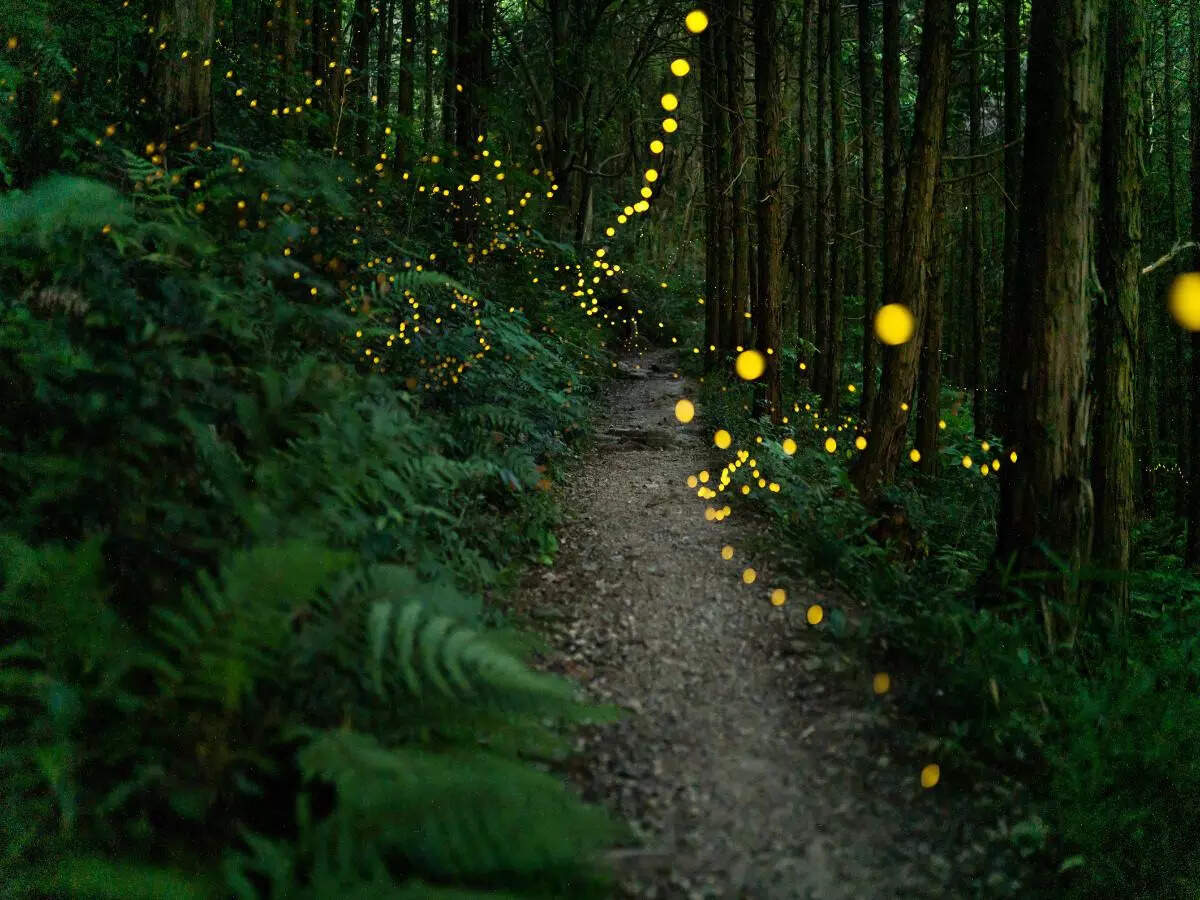
Nature holds countless surprises, but only for those keen enough to witness or experience them firsthand. Well, you would be surprised to witness those sights, but nature can has unbelievable treasures that are capable of producing effects so extraordinary that even artificial intelligence pales in comparison to that.
One such marvel awaits explorers in the Western Ghats, particularly in the states of Goa and Maharashtra! There are actually forests that emit an ethereal green glow after nightfall. To witness this breathtaking spectacle, you can start with exploring the Bhimashankar Wildlife Reserve, where the nocturnal luminescence of the forest bewitches visitors with its rarity and uniqueness.
Read more: 8 coolest hill stations in India accessible via direct flights!
Throughout the monsoon season, India’s luminous forest experiences heavy rainfall, rendering it the most usual forest found anywhere in India in daylight. However, as night descends, the forest undergoes a captivating metamorphosis, aglow with radiant luminescence. But what causes this enchanting phenomenon?
Cities known for their signature colours; India’s two on the list
FacebookTwitterPintrest
The phenomenon is attributed to Mycena, a bacteria distinct from others, which possess a unique trait that causes it to emit light in the presence of ample moisture. These bacteria adhere to branches, decaying leaves, and twigs, akin to fungus, resulting in the mesmerizing bioluminescent effect that bathes the forest in radiant hues.
This captivating spectacle is particularly prominent in the secluded village of Ahupe during the monsoon season. Despite extensive study, scientists remain puzzled as to why these bacteria possess such luminescent properties.
Read more: World’s most terrifying attractions: Reserved only for the brave hearts!
Referred to by scientists as bioluminescence, this natural phenomenon isn’t confined to the ocean; it also occurs within forests, with this particular forest serving as proof of its occurrence.
As per the records, scientists are yet to solve the mystery of predicting the next occurrence of this luminous phenomenon. However, for the fortunate few, stumbling upon this Avatar-like forest could offer a once-in-a-lifetime experience beyond comparison.
Ideal time of visit this place

Do note that this bioluminescent spectacle is not a daily occurrence. However, you might be fortunate enough to witness it following an evening of intense rainfall during the monsoon period, typically in July, August, and September. Also, fireflies are more readily observed in the pre-monsoon months of May and June.
>>> Read full article>>>
Copyright for syndicated content belongs to the linked Source : Time Of India Travel – https://timesofindia.indiatimes.com/travel/travel-news/this-glowing-forest-in-indians-western-ghats-proves-nature-never-fails-to-amaze/articleshow/109433482.cms
































